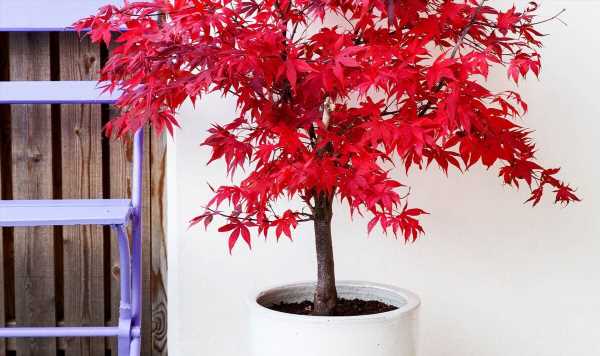Alan Titchmarsh explains how to prune an Acer tree
Japanese maples, also known as acers, are small, deciduous trees that can often be found in modern, suburban and shady gardens. The plant is beautiful with lacy, delicate leaves and autumnal colours which range from green to purple, yellow, pink or red.
However, the plant can be tricky to care for as it doesn’t suit certain conditions.
The trees do not like strong winds or full sun as it can scorch their leaves.
The popular plant also doesn’t like being positioned too close to other plants as they like to have space for their roots to spread.
Another “key” element of looking after Japanese maples is watering.

Jack Sutcliffe, gardening expert and co-founder at Power Sheds has shared both “the key” to watering Japanese maples and what to “avoid” doing while watering the tree.
He exclusively told Express.co.uk: “When watering Japanese maples, it is important to water deeply and slowly.
“This will ensure that the water penetrates the soil and reaches the roots.
“Water the soil around the tree, not the leaves, and avoid watering within a foot of your Japanese maple’s trunk.
Don’t miss…
‘Worst invasive’ plants that are ‘illegal’ to plant and allow to grow in gardens[LATEST]
3 ‘invasive’ and ‘destructive’ weeds to remove that will ‘smother’ your garden[INSIGHT]
Gardeners share ‘best’ houseplant for great display – ‘you can’t even kill’ them[UPDATE]
“The key to watering your Japanese maples is to make sure you do not water too much.
“Water the tree in the morning so that the leaves have time to dry before nightfall.
“You will only need to water it once a week during hot, dry spells and during the winter months, once every two weeks.”
The plant needs to be watered more regularly during its first year to help it become more established.
Looking for a new home, or just fancy a look? Add your postcode below or visit InYourArea
This is particularly important if it has been planted in spring or in the summer season.
Acers that have been planted in pots need to be watered more regularly so they don’t dry out.
During the warmer season, gardeners may need to be watering the plant as much as once a day to stop it from drying out.
Japanese maples planted directly into the ground need to be fed using general-purpose fertiliser in late February.

They also need to be mulched using bark or compost to help suppress weeds and retain moisture.
However, gardeners should not put mulch too close to the trunk otherwise it could rot.
Japanese maples, if well cared for, can live to be over 100 years old.
Source: Read Full Article
